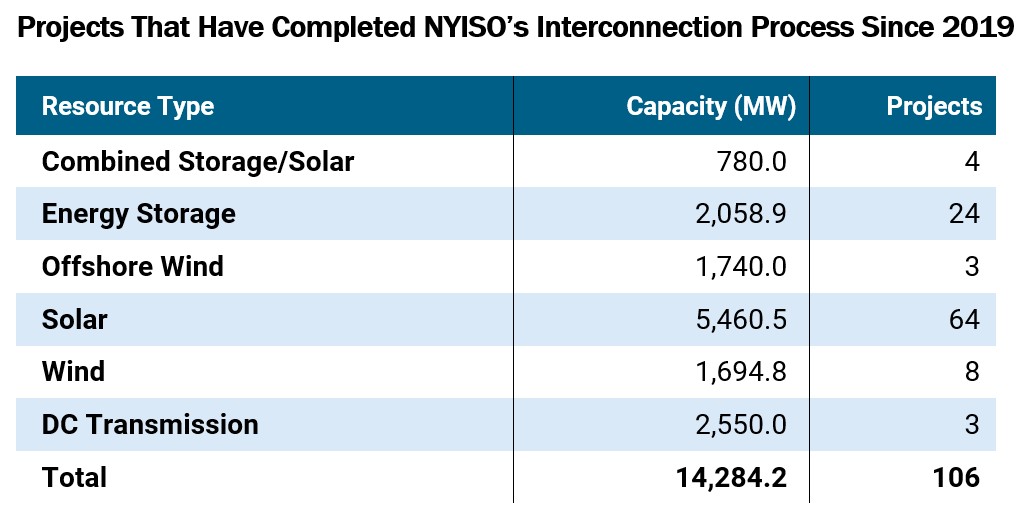Since 2019, Clean Energy Projects Totaling More Than 14,000 MW Have Completed the Interconnection Process

3,493 MW are under construction
New York’s electric grid urgently needs an abundance of new generation to serve rising consumer demand.
But even as hundreds of proposed projects advance through NYISO’s new “Cluster Study” process for interconnection, most of those that completed the interconnection process in recent years have yet to begin construction.

Since 2019, 106 projects representing more than 14,000 megawatts (MW) of clean energy supply have completed the interconnection process. New York’s total generating capacity is approximately 40,000 MW.
Of the projects that have completed the review process, the NYISO estimates that just seven, representing 3,493 MW, have begun construction. These include the Champlain Hudson Power Express transmission line that will deliver 1,250 MW of power from Canada to New York City, and the 340 MW Alle-Catt Wind Farm in Cattaraugus County.
Developers face numerous factors that ultimately influence their decision to begin construction. They must secure permits from state, local, and federal entities. One such entity is the Office of Renewable Energy Siting and Electric Transmission (ORES) which consolidates the environmental review and permitting process of large-scale renewable energy projects in New York.
The ORES Renewable Energy Permit Application Status map shows that less than 20 percent of recently permitted projects are either operational or under consideration. The remaining projects have received siting permits but have not yet started construction.
Developers must also navigate challenges associated with supply chain disruptions, access to project capital, and economic forces that drive up the costs and delivery times of equipment.
According to a recent analysis from Clean Investment Monitor, “recent and proposed trade measures targeting clean technology imports, especially from China, could reshape the economics of domestic manufacturing ... But if they are poorly targeted or paired with policy uncertainty or retaliatory actions, they risk driving up costs and slowing deployment.”
The report notes that weakened incentives for clean energy, such as measures adopted in the One Big Beautiful Bill Act to eliminate tax credits for clean energy investment, could lead to further delays and cancellations.
As policymakers and regulators examine how the state can advance its clean energy goals, the complexities behind developing large-scale renewable energy projects should be considered. While interconnection is often cited as a reason for project delays, the number of projects with approved interconnection agreements that have not yet begun construction suggests that other factors are at play.
